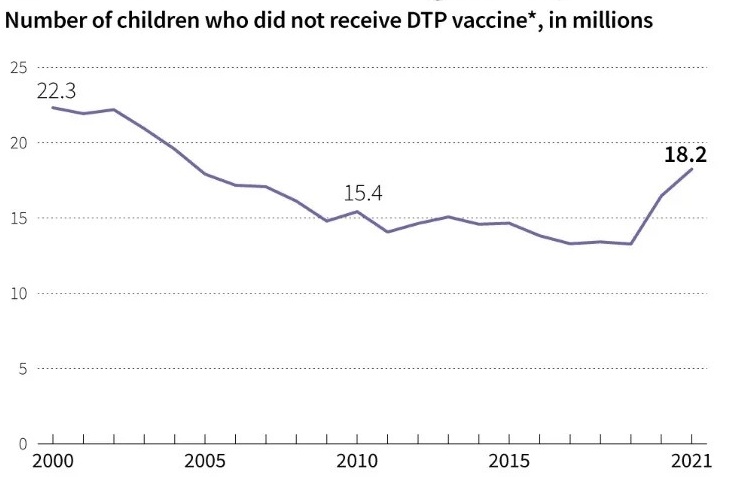Child obesity spikes while malnutrition persists
 |
| Overweight children account for 40.7 and 50 per cent of all kids living in downtown Hanoi and HCM City, a recent study shows.-VNA/NVS Photo Duong Ngoc |
Although it has decreased by 1 per cent per year, the percentage of children less than 5 years old affected by stunting (low height-for-age) remains high at 24.3 per cent nationwide in 2016, according to the National Institute of Nutrition. Malnutrition rates in children also remain high in some regions, especially in the mountainous northern regions (30.3 per cent) and the Central Highlands (34.2 per cent).
A recent study from the institute also shows a sharp increase in the number of overweight school-age children in Vietnam compared to a decade ago.
In HCM City, the percentage of overweight children under 5 years old has tripled in the past decade, from 3.7 per cent in 2007 to 11.5 per cent in 2017, while the percentage of overweight children from grade 1-12 has doubled, from 11.6 per cent in 2007 to 21.9 per cent in 2017.
Overweight children account for 40.7 and 50 per cent of the total children living in downtown Hanoi and HCM City, respectively, the study shows.
There are about 100,000 overweight children in the major cities of Hanoi, HCM City, Hai Phong, Can Tho and Da Nang. More overweight children were counted in Hanoi’s inner districts of Hai Ba Trung, Dong Đa, and Hoan Kiem than in the outer districts of Hoang Mai and Thanh Xuan, according to the Hanoi Preventive Medicine Centre.
The increased number of overweight children can be attributed to an inactive lifestyle and excessive consumption of low nutrition, high-fat foods such as fast food and soft drinks, said Dr Le Danh Tuyen, head of the National Institute of Nutrition.
Meanwhile, the reason behind the high percentage of malnourished children is the traditional diet of most Vietnamese, which does not provide enough vitamins and minerals for the children’s physical, mental and intellectual development, he said.
“The majority of Vietnamese are not aware of the importance of micronutrients such as vitamin A, iron, zinc, and iodine, which has resulted in a ‘hidden famine’ that affects millions of children,” he said.
Changing the parents’ consumption habits is pivotal to helping children develop a healthier diet, said Tran Khanh Van, deputy head of the institute’s Department of Microbiology.
“Parents should seek to buy more micronutrient supplements that are allowed by the Ministry of Health,” she said.
“The family’s daily meals should incorporate different types of food, which should be chosen carefully to ensure they are rich with micronutrients,” she added.
Speaking on a different aspect of the issue, Dr Le Danh Tuyen said young adults should be concerned about nutritional supplementation even before they start a family and become parents, as well as during pregnancy.
“Ensuring the right nutrition during the first 1,000 days of life is crucial to the healthy development of a child,” he said.
“Young women must ensure they receive enough nutrition during pregnancy, especially iron, for both them and their babies,” he added.
Young mothers should be supplemented with high doses of vitamin A within the first month after giving birth, Tuyen added. Infants should be breastfed during the first two years of life to prevent vitamin A deficiency.
What the stars mean:
★ Poor ★ ★ Promising ★★★ Good ★★★★ Very good ★★★★★ Exceptional
 Tag:
Tag:
Related Contents
Latest News
More News
- ADB forecasts 6 per cent growth for Vietnam (April 12, 2024 | 17:17)
- SCB, Van Thinh Phat execs convicted of embezzlement; Truong My Lan sentenced to death (April 12, 2024 | 09:59)
- Finnish kindergarten opens in Hanoi (April 12, 2024 | 09:50)
- Over 746 tonnes of rice allocated to Dien Bien, Bac Kan provinces in between-crop period (April 12, 2024 | 08:54)
- Truong My Lan sentenced to death in major bank fraud case (April 12, 2024 | 08:49)
- Netflix ordered to stop distributing unauthorised games in Vietnam (April 11, 2024 | 17:06)
- Deputy PM highlights incentive policies for rooftop solar power installation (April 11, 2024 | 17:03)
- Former FLC chairman faces securities market manipulation and asset misappropriation charges (April 11, 2024 | 15:34)
- Vietnam sends over 35,900 workers abroad in Q1 (April 10, 2024 | 14:56)
- OVs in Hungary eager to join trip to Truong Sa (April 10, 2024 | 14:52)
























 Mobile Version
Mobile Version